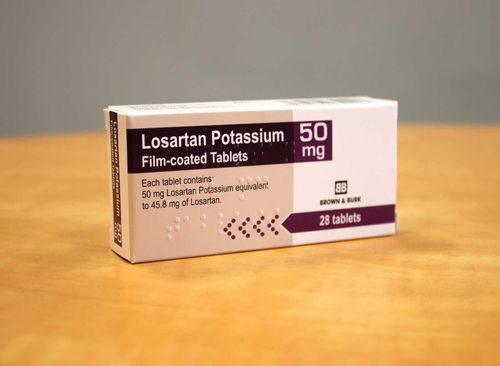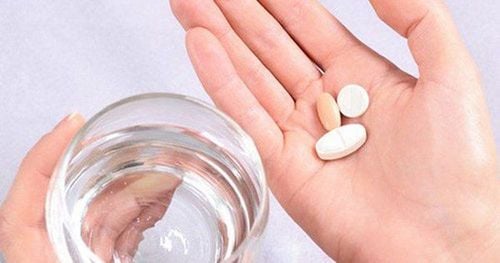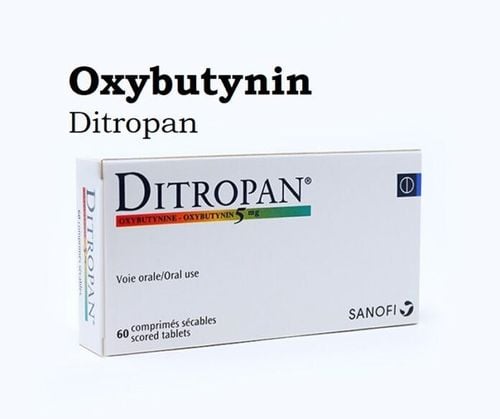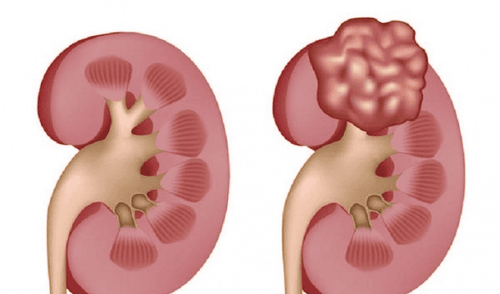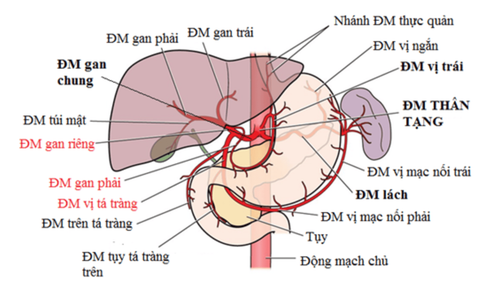This is an automatically translated article.
The article is professionally consulted by MSc Vo Thien Ngon - Urology Surgery Doctor, Vinmec International Hospital Da Nang.
Kidneys are organs that take on many tasks to help the body maintain life such as filtering the blood, maintaining salt and electrolyte balance in the blood, regulating blood pressure,... Kidney diseases such as glomerulonephritis, stones kidney, kidney failure, kidney cancer, ... will directly affect the quality of life, even the life of the patient.
1. Kidney failure
1.1 What is kidney failure? Kidney failure (kidney damage) is a decrease in kidney function. Kidney failure is divided into two groups according to the duration of the disease: acute renal failure (acute kidney injury) and chronic kidney failure (chronic kidney disease). Acute renal failure develops within a few days, with partial or complete recovery of renal function after appropriate treatment within a few weeks. In contrast, chronic renal failure is a progressive and irreversible process of kidney function. Treatments only help slow the progression and prevent complications of chronic kidney failure. And when kidney function declines up to 90%, patients need kidney replacement therapy with hemodialysis, peritoneal dialysis or kidney transplant.If no treatment is done, the kidneys will eventually stop working completely. Loss of kidney function (the kidneys are unable to remove waste from the body) can lead to death.
1.2 Complications of kidney failure Water retention, which can lead to edema of the extremities, hypertension, acute pulmonary edema; Anemia, hyperkalemia , which can threaten the patient's life; Leads to cardiovascular disease, weakens bones and increases the risk of fractures; Decreased libido or impotence; Causes damage to the central nervous system, leading to difficulty concentrating, seizures, or personality changes; The body is more susceptible to infections due to a weakened immune response. 1.3 Causes of kidney failure Causes of acute kidney failure: Trauma causing blood loss, prostate enlargement, dehydration, kidney damage from sepsis, kidney damage after using certain drugs or toxins , pregnancy complications (eclampsia and pre-eclampsia); Causes of chronic kidney failure: Effects of diabetes, hypertension, glomerulonephritis, polycystic kidney disease, tubulointerstitial nephritis, prolonged urinary tract obstruction (due to prostate enlargement, kidney stones or certain cancers), recurrent pyelonephritis, vesicoureteral reflux (urine reflux into the kidneys). 1.4 Symptoms of kidney failure Usually, because the kidneys have a good compensatory capacity, in the early stages of kidney failure, the disease does not cause symptoms. By the time symptoms appear, kidney failure is already in the late stage. Common symptoms include: nausea, vomiting, loss of appetite, fatigue, chills, sleep disturbances, frequent urination at night, foamy urine, less or more urine than usual. Bloody urine, difficulty urinating, dizziness, lightheadedness, cramps, persistent itching, edema of the extremities, chest pain (if pericardial effusion is present) or shortness of breath (if pulmonary edema is present), Bad breath, back pain.
1.5 Methods to prevent kidney failure Keeping blood pressure on target: less than 140/90 mmHg; Don't smoke, exercise daily, maintain ideal weight and control blood sugar and cholesterol levels; Drink 1.5 - 2 liters of water per day, increase water consumption in hot days or when exercising a lot; Follow a low-salt, low-protein, and low-fat diet.
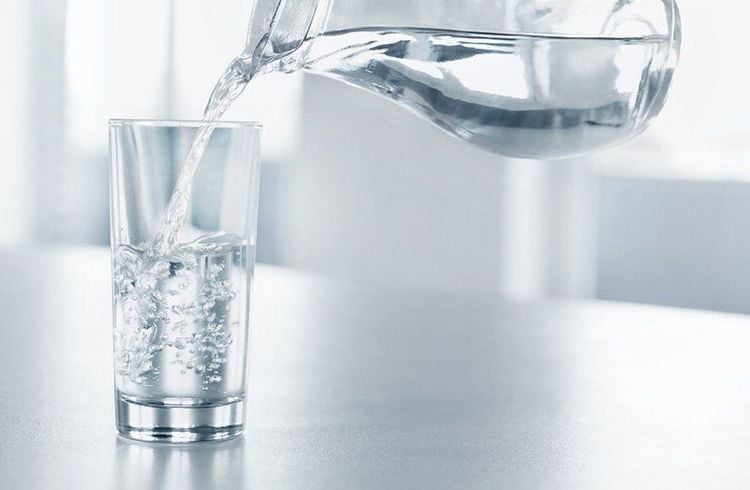
2. Kidney stone disease
2.1 What is kidney stone disease? Kidney stone, also known as kidney stone, is a disease that occurs when minerals in the urine are deposited in the kidneys, ureters, bladder, ... forming solid crystals. The size of kidney stones can be up to several centimeters. Small kidney stones can be passed out during urination. However, larger stones when moving in the kidney, bladder, ureters, ... can cause rubbing, lead to damage, even block the urinary tract and cause many unpredictable consequences. .2.2 Causes of kidney stone disease Arbitrary use of drugs, abuse of antibiotics for a long time; Habit of eating salty, greasy; Habit of drinking less water, not enough water for the kidneys to filter and excrete minerals out; Long-term sleep loss causes kidney tissue not to be regenerated, more severe damage, easy to lead to kidney stones; Skipping breakfast causes bile to accumulate in the gallbladder and intestines, leading to kidney stones; Holding urine causes minerals not to be eliminated, deposited in the kidneys, causing kidney stones. 2.3 Symptoms of kidney stone disease Back pain, pain in the lower ribs; Pain when urinating, blood in the urine, hematuria, urinary incontinence; Feeling nauseous and vomiting; Fever or chills. 2.4 Prevention of kidney stones Drink enough water every day: 2-3 liters/day; Limit products that increase the risk of kidney stone formation such as iced tea, soda, strawberries, nuts, ... Eat lightly, limit foods high in fat and cholesterol; Maintain a reasonable body weight

3. Glomerulonephritis
3.1 What is glomerulonephritis? Glomerulonephritis is inflammation that occurs in the glomeruli, including inflammation in the glomeruli and blood vessels in the kidney. Glomerulonephritis causes symptoms such as edema, increased blood pressure, anemia, changes in urine composition,... If not diagnosed and treated promptly, the disease can lead to kidney failure, affecting many people. to the patient's quality of life and even death.Glomerulonephritis includes 2 types: acute glomerulonephritis and chronic glomerulonephritis. Acute glomerulonephritis is an acute inflammation of the glomeruli, occurring after group A beta-hemolytic streptococcal infections caused by skin infections or pharyngitis, which can be completely recovered after 4-6 weeks of treatment. . And chronic glomerulonephritis is a chronic inflammation in the glomeruli, progressing over many months and years, leading to atrophy of both kidneys, irreversible even with aggressive treatment.
3.2 Causes of glomerulonephritis Pharyngitis or skin infections caused by group A beta-hemolytic streptococci of some types - is the most common cause of acute glomerulonephritis; Systemic lupus erythematosus ; Diabetes mellitus; IgA nephropathy; Focal glomerular fibrosis; Uncontrolled hypertension; Side effects of some drugs and chemicals; Other causes: Nodular vasculitis, glomerulonephritis in Osler's disease,... 3.3 Glomerulonephritis symptoms Edema of the face, 2 legs, mainly in the morning and afternoon; Hypertension, which occurs frequently in the acute phase, occurs occasionally with chronic glomerulonephritis. Prolonged high blood pressure causing damage to the fundus, heart failure or stroke; General bloody diarrhea, urine color like meat wash, no clot. Blood in the urine 1-2 times a day, not often, after the number of times the blood in the urine becomes less frequent, it happens once every 3-4 days and then completely disappears; Urine changes such as oliguria or anuria; Heart failure, mild fever 37.5 - 38.5°C, dull or severe low back pain, abdominal pain, mild abdominal distension, nausea, loose stools, anemia. 3.4 Prevention and treatment of glomerulonephritis. Solve infections, especially chronic infections of the throat, treat otitis media, cut tonsils with pus, ... and impetigo, swelling with pus on the skin. ; Treatment of infections caused by group A beta-hemolytic streptococci with antibiotics; Do not overwork, avoid cold, bacterial infection; Follow-up after treatment for at least 1 year; Light, protein-restricted diet in case of acute glomerulonephritis with renal failure; Bed rest during the acute phase is about 2-4 weeks, after the acute phase only light physical activity.

4. Acute pyelonephritis
4.1 What is acute pyelonephritis? Acute pyelonephritis is an upper urinary tract infection, including acute infection of the renal calyces, renal pelvis, ureters and renal parenchyma. Pyelonephritis easily occurs after lower urinary tract infections, urinary tract surgery, urinary tract obstruction (due to stones, tumors, retroperitoneal fibrosis, pregnancy, ureteral pyelonephritis), with inflammatory foci. localized (cystitis, proctitis, appendicitis, prostatitis,...).4.2 Symptoms of acute pyelonephritis Symptoms of acute pyelonephritis include: sudden high fever, chills, dry cracked lips, rapid deterioration of health, back pain, dull or severe pain , spreading to the bladder and external genitalia. In addition, the patient also had pain in the lower back, painful urination, frequent urination, bloody urine, loss of appetite, loss of appetite, abdominal distension, nausea, vomiting,...
4.3 Complications of pyelonephritis Acute kidney pyelonephritis is an acute disease with aggressive manifestations of infection. The disease also responds quite well to antibiotic treatment. If diagnosed and treated promptly and aggressively, the disease can be completely cured after 10-14 days. However, if treatment is delayed or incorrect, the disease can easily recur, become chronic, cause many dangerous complications such as sepsis, acute renal failure, pyelonephritis, renal papillary necrosis, hypertension, ... can lead to death.
5. Nephrotic syndrome
Nephrotic syndrome, also known as fatty kidney, is a condition in which the kidneys are weak, causing inflammation, edema, protein in the urine, low protein in the blood, and increased fat.5.1 Causes of kidney failure Primary kidney failure is caused by damage to the glomeruli, which reduces kidney function; Secondary Nephropathy - Fatty kidney failure caused by systemic diseases such as diabetes, lupus erythematosus, immune system disorders, infections, and the effects of certain cancer medications. 5.2 Symptoms of kidney failure Generalized edema, with risk of peritoneal, pleural, pericardial, testicular effusion or, worse, leading to cerebral edema; Patients with little urine, less than 500ml/day; Fatigue, poor diet, leading to malnutrition complications; Pale skin, insomnia, difficulty breathing; When the disease progresses, it can lead to kidney failure, infection, blood clots in the veins and very dangerous low calcium. 5.3 Treatment of nephrotic syndrome The treatment of the disease includes focusing on symptoms or complications, monitoring the pathogenesis for appropriate treatment. The specific treatment methods are:
Treatment to reduce edema using diuretics; Treatment of damage to the inside of the glomerulus. Depending on whether the lesion is primary or secondary, appropriate drugs such as immunosuppressants or corticosteroids should be used.
6. Kidney cancer
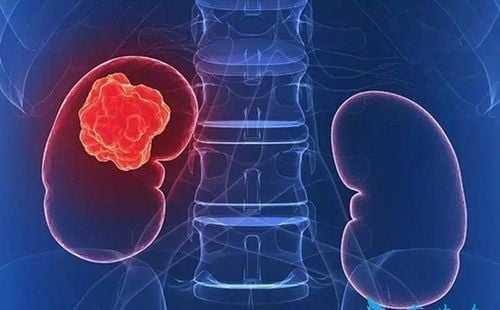
6.1 Causes of the disease Currently, the cause of kidney cancer is still not clear. Some factors that increase the risk of disease include:
Smoking; Exposure to harmful chemicals; Overweight and obesity; Have end stage kidney disease on dialysis; Prolonged use of pain relievers; Genetic factors. 6.2 Symptoms of kidney cancer Blood in the urine, pink, brown or slightly changed urine color; Low back pain, usually emanating from one side and hip area, dull, continuous and prolonged; There is a tumor in the abdomen; Fatigue, anemia, sudden unexplained weight loss, fever. 6.3 How to prevent kidney cancer Because the exact cause of kidney cancer has not been determined, there is no specific prevention method. However, each person is still advised to apply the following to reduce the risk of kidney cancer:
Do not smoke; Minimize the use of stimulants; Increase exercise and sports; Occupational safety protection in accordance with regulations. 6.4 Treatment of kidney cancer Early stage kidney cancer (1, 2): Surgery to remove part or all of the kidney, possibly removing the adrenal gland. Patients may be assigned to use minimally invasive thermal therapy to destroy the tumor; Stage 3: Renal tumor resection with adjuvant systemic therapy. If possible, distant metastatic tumor will be removed to reduce uncomfortable symptoms; End-stage renal cancer: Surgical treatment to release compression if present, analgesia and anti-compression radiotherapy, analgesia, targeted therapy and immunotherapy. Most common kidney diseases are silent, patients may not realize until the disease is advanced. Therefore, people at high risk of kidney disease should go for regular health check-ups or check when there are warning symptoms of kidney disease to detect the disease early and treat it promptly.
Please dial HOTLINE for more information or register for an appointment HERE. Download MyVinmec app to make appointments faster and to manage your bookings easily.





